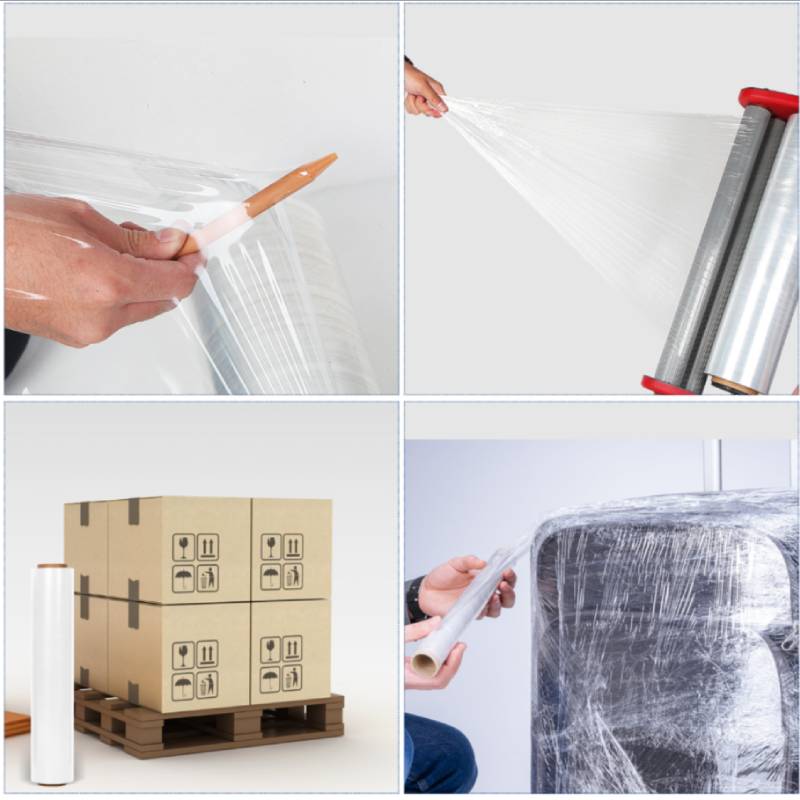Exploring the Benefits and Uses of Stretch Film and Shrink Wrap in Packaging
Understanding Stretch Film and Shrink Wrap Key Differences and Applications
In the world of packaging, two materials often come to the forefront stretch film and shrink wrap. Though they may seem similar at first glance, each serves distinct purposes and offers unique benefits in various applications. This article aims to delve into the characteristics, uses, advantages, and limitations of both stretch film and shrink wrap to help businesses make informed decisions about their packaging needs.
What is Stretch Film?
Stretch film, sometimes known as stretch wrap, is a highly stretchable plastic film that is used to secure products and pallets. It is typically made from linear low-density polyethylene (LLDPE) and is available in various thicknesses and lengths. Stretch film is designed to be stretched over products, providing a tight, secure fit without the use of adhesives.
Characteristics of Stretch Film
- Elasticity One of the standout features of stretch film is its elasticity. It can stretch up to 300% of its original size without tearing, which allows it to conform tightly around the items it is wrapping. - Transparency Most stretch films are transparent, allowing for easy visibility of the packaged products. This transparency is particularly useful in retail settings.
- UV Protection Stretch films can be manufactured with UV protection, which is beneficial for products exposed to sunlight for prolonged periods.
Common Uses of Stretch Film
Stretch film is commonly used in warehouses and distribution centers for palletizing goods. It helps stabilize cargo during transportation, ensuring that items remain intact and secure. Additionally, stretch film is widely used in retail and commercial settings for bundling items together, such as boxes or merchandise, making it easier to handle and transport.
Benefits of Stretch Film
- Cost-Effective Stretch film is generally more economical than other forms of packaging. Its ability to securely hold products while minimizing the amount of material used contributes to its cost-effectiveness.
- Environmentally Friendly Options Many manufacturers now offer recyclable and biodegradable stretch films, providing environmentally cautious alternatives.
- Versatility Stretch film can be used for a variety of products, from small consumer goods to large industrial items
.What is Shrink Wrap?
stretch film & shrink wrap

Shrink wrap, unlike stretch film, is a type of plastic film that shrinks tightly around an object when heat is applied. It is often made from polyolefin, PVC, or polyethylene. When heat is applied, shrink wrap molds to the shape of the item, providing a tight seal.
Characteristics of Shrink Wrap
- Heat Activation The key characteristic of shrink wrap is its reliance on heat to activate its shrinking properties, resulting in a snug fit around packaged items.
- Tamper Resistance Shrink wrapping provides an additional layer of security. Once sealed, it is difficult to tamper with or remove without damaging the packaging.
- Glossy Finish Shrink wrap generally has a glossy appearance, enhancing the presentation of the products.
Common Uses of Shrink Wrap
Shrink wrap is widely used in retail for packaging food items, consumer goods, and promotional bundles. It is also common in the manufacturing sector for packaging machinery and equipment. Because it provides a tight seal, shrink wrap is particularly effective for protecting items from dust, moisture, and tampering.
Benefits of Shrink Wrap
- Product Protection Shrink wrap offers excellent protection against environmental factors. It keeps products clean, dry, and free from damage during transportation and storage.
- Aesthetic Appeal The glossy finish of shrink wrap can enhance the visual appeal of the product, making it more attractive to consumers.
- Cost-Effective for Bulk Packaging For products that require bundling or are sold in bulk, shrink wrap provides a cost-effective and efficient packaging solution.
Conclusion
In conclusion, both stretch film and shrink wrap are essential tools in the packaging industry, each with its own set of unique attributes and applications. Stretch film excels in providing a robust and flexible solution for securing items, while shrink wrap offers a more rigid and protective option for enhancing product presentation and security. Understanding the distinctions between these two types of packaging will help businesses select the most appropriate material for their specific needs, ensuring product integrity during storage and transportation. Whether it’s safeguarding pallets of goods or presenting retail products attractively, stretch film and shrink wrap play crucial roles in modern packaging solutions.
-
Have the freedom of customizing your custom mailers any way you want! Our dedicated packaging support will help deliver you the mailing experience you need to elevate your shipping experience to the next level! Start making a strong impression on your customers and stand out from your competitors! -
LIYA uses high quality raw materials which directly purchased from large enterprises domestic and overseas such as PetroChina, Sinopec, Sabic, Equate, ExxonMobil, Dow Chemical, Total, and Borouge, ensuring the price advantage and quality of the raw materials. -
LIYA uses high quality raw materials which directly purchased from large enterprises domestic and overseas such as PetroChina, Sinopec, Sabic, Equate, ExxonMobil, Dow Chemical, Total, and Borouge, ensuring the price advantage and quality of the raw materials.





